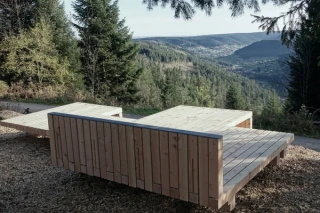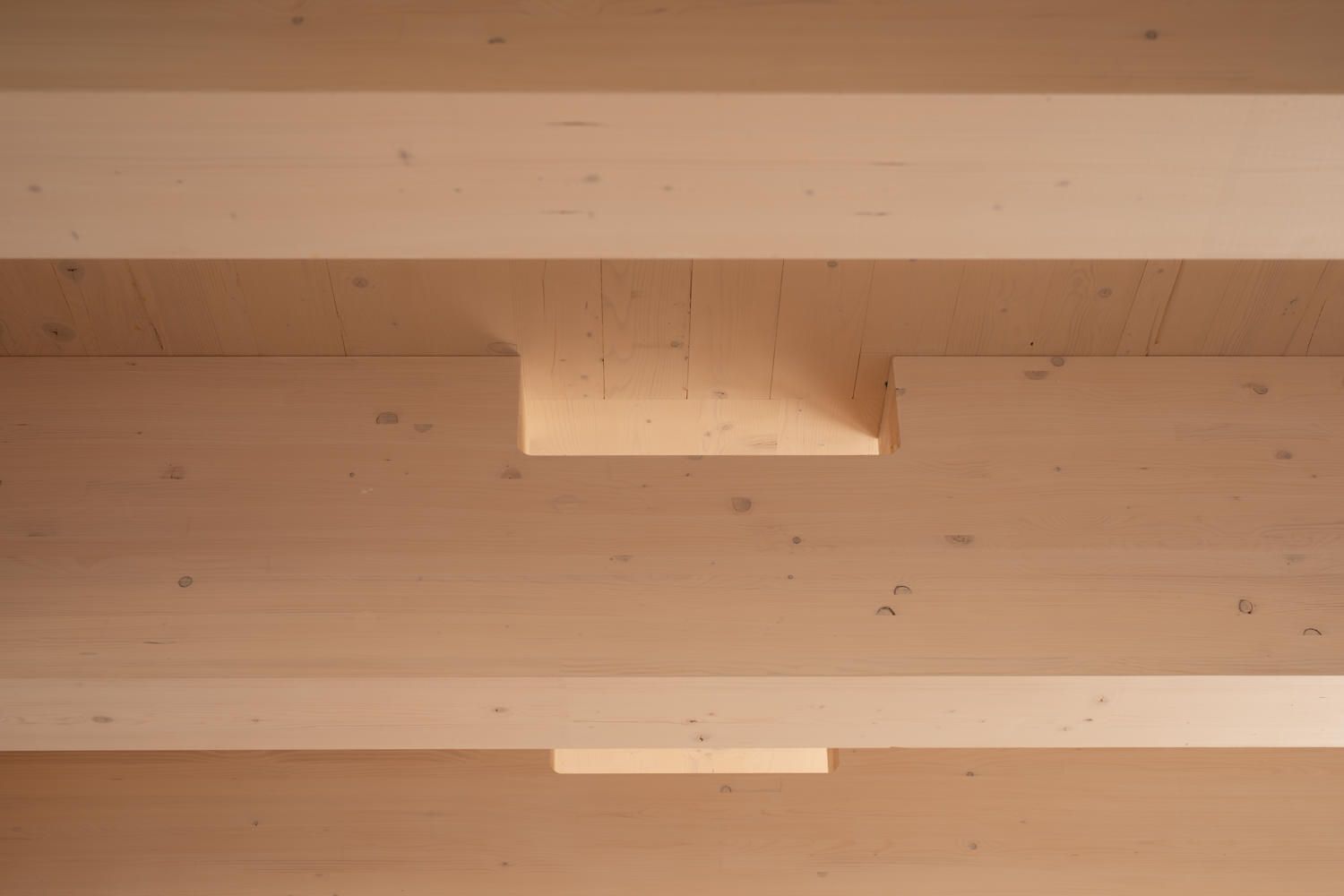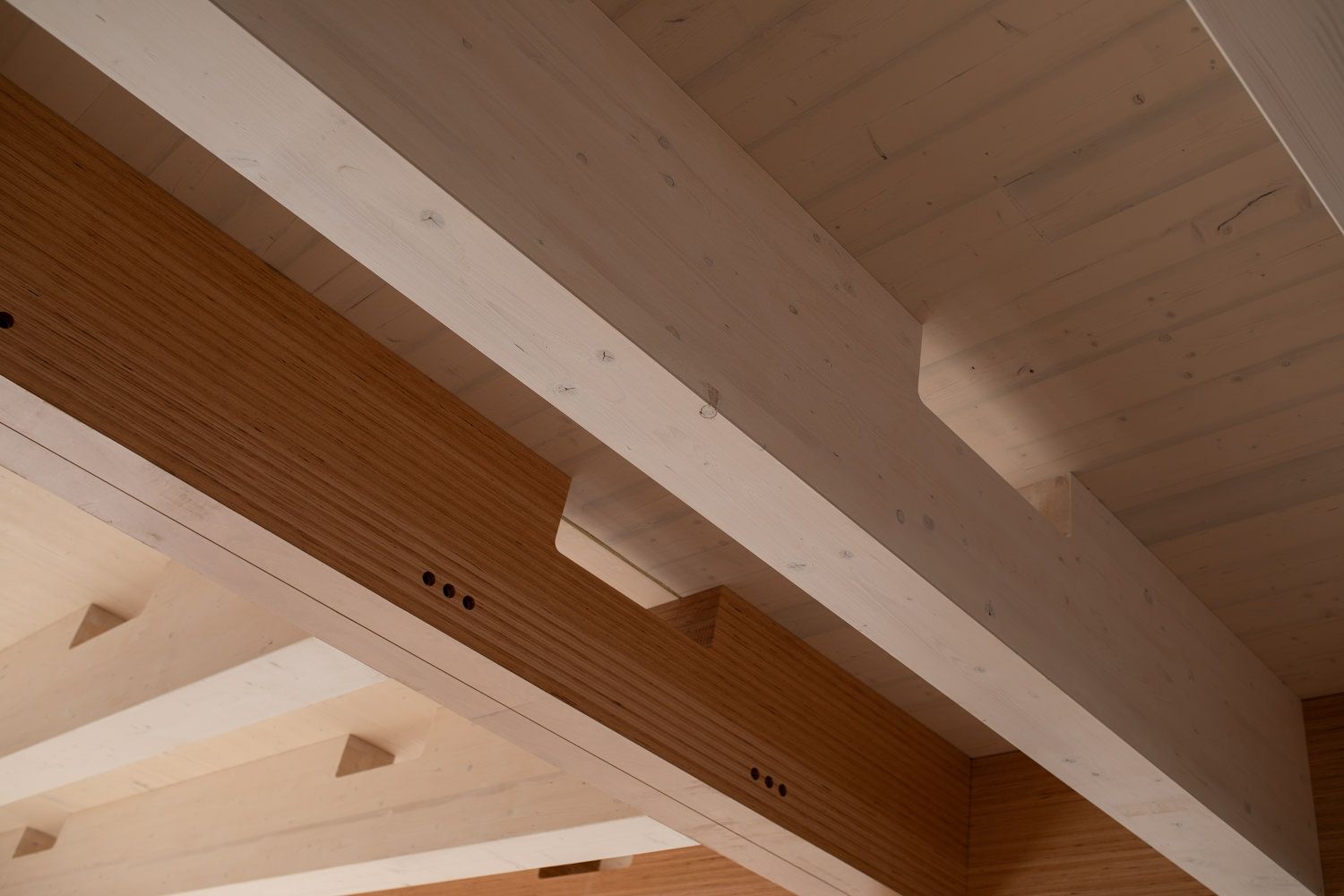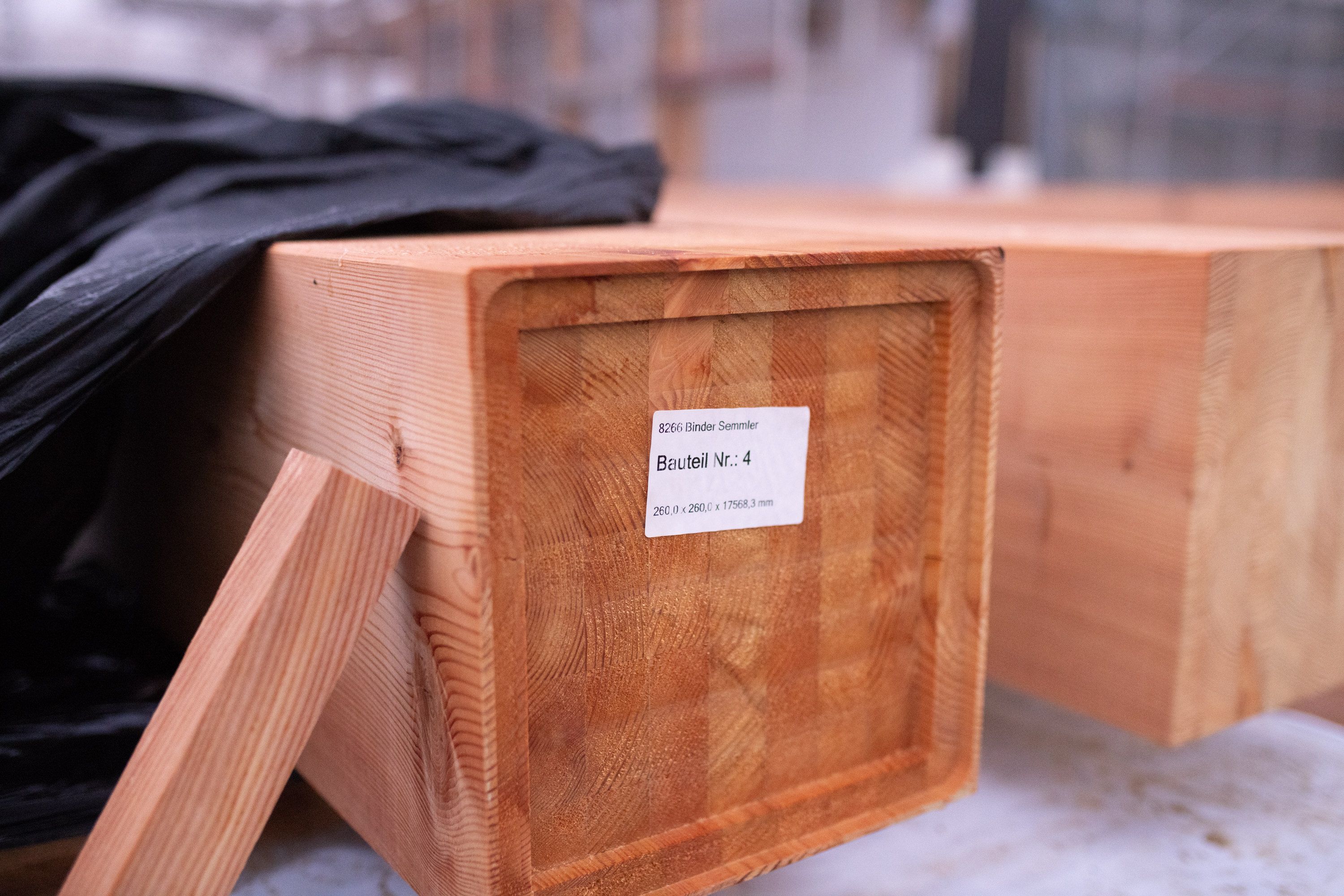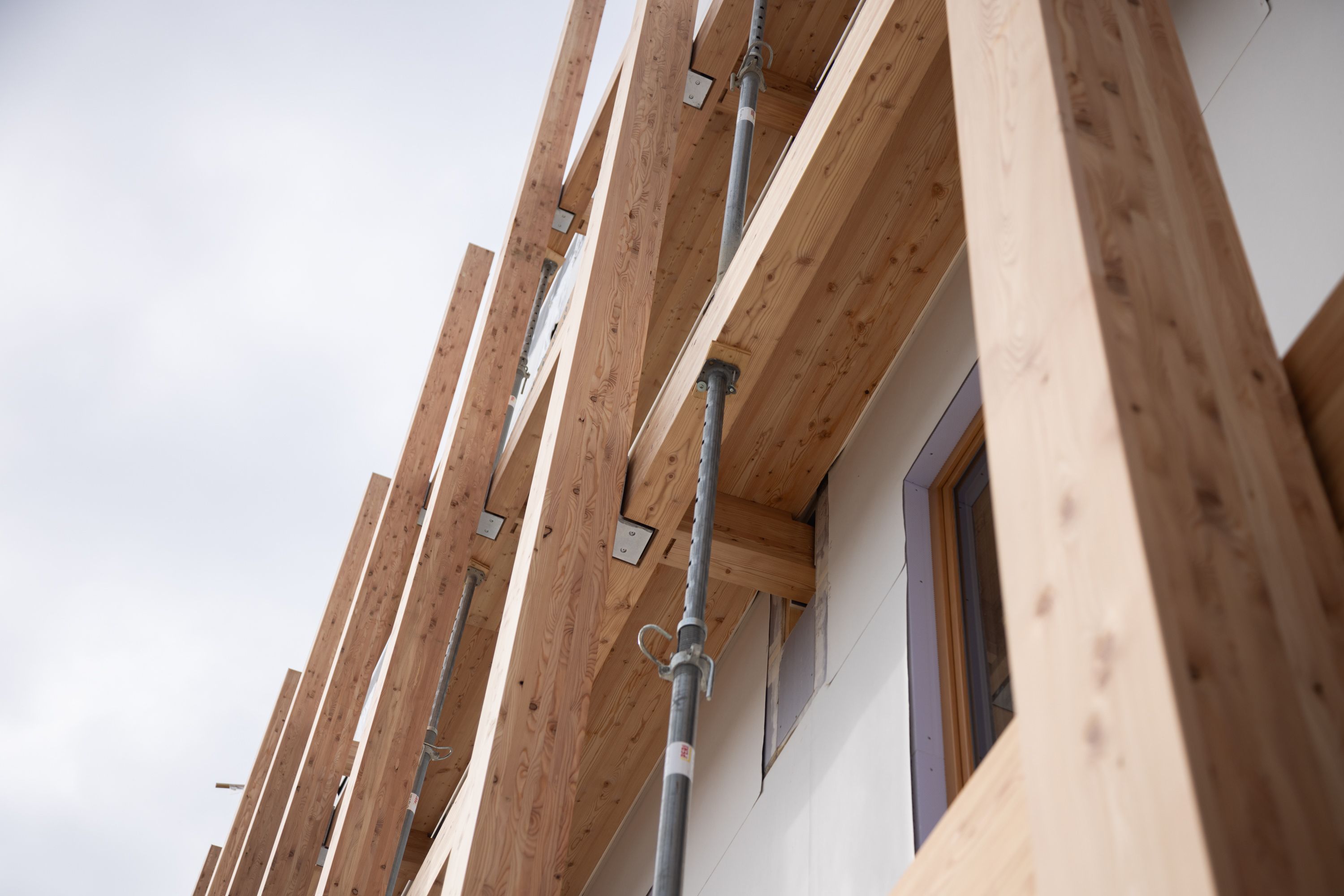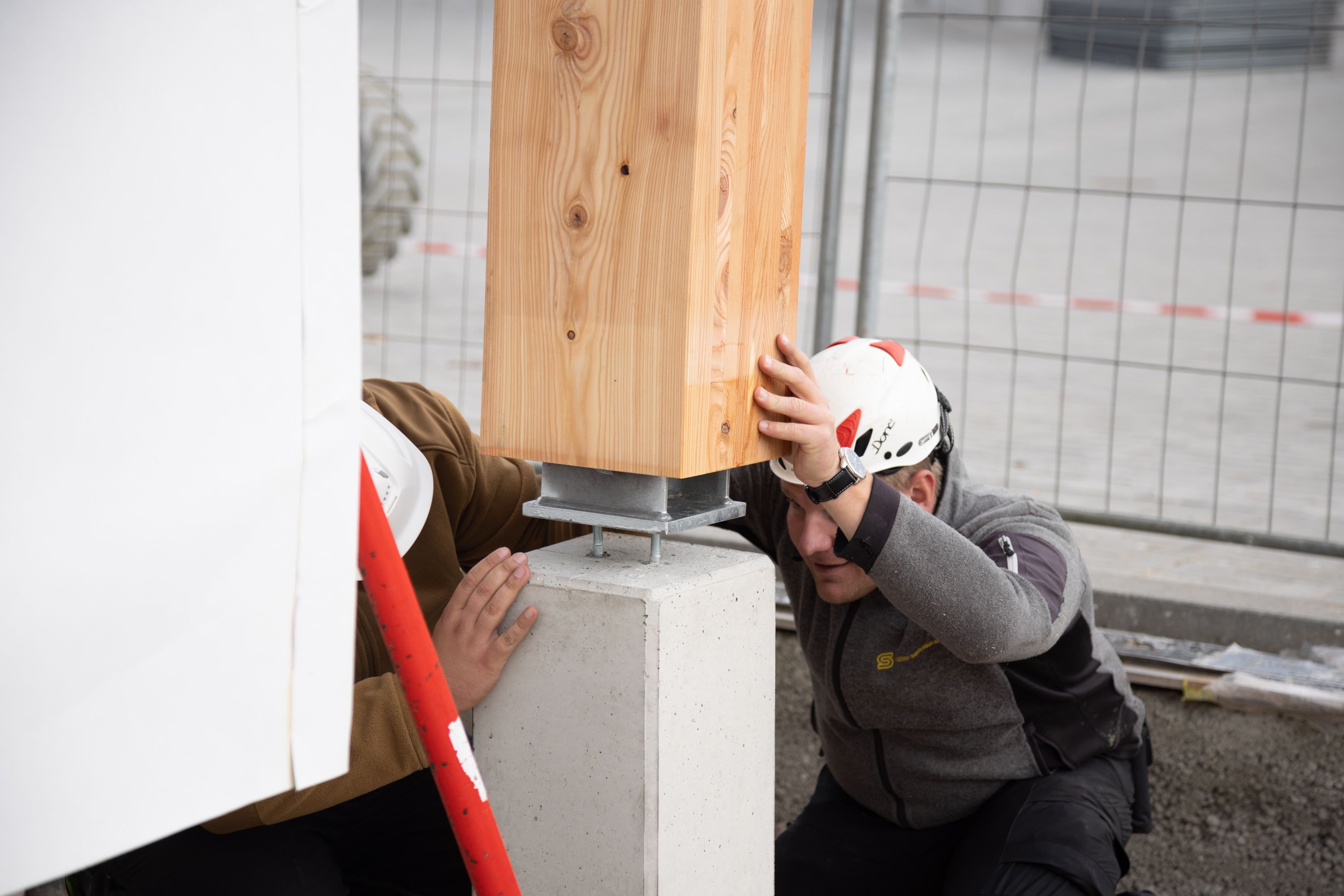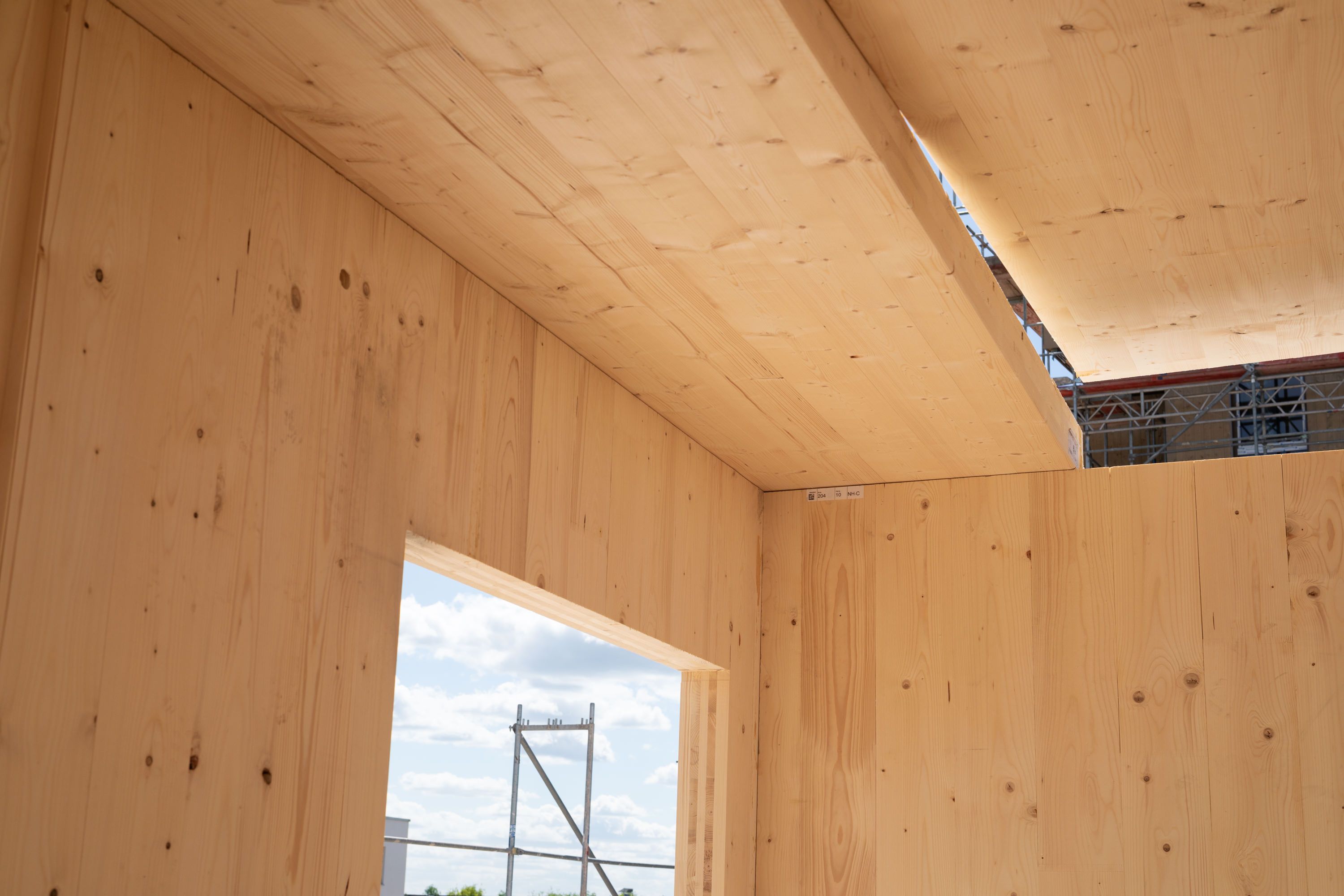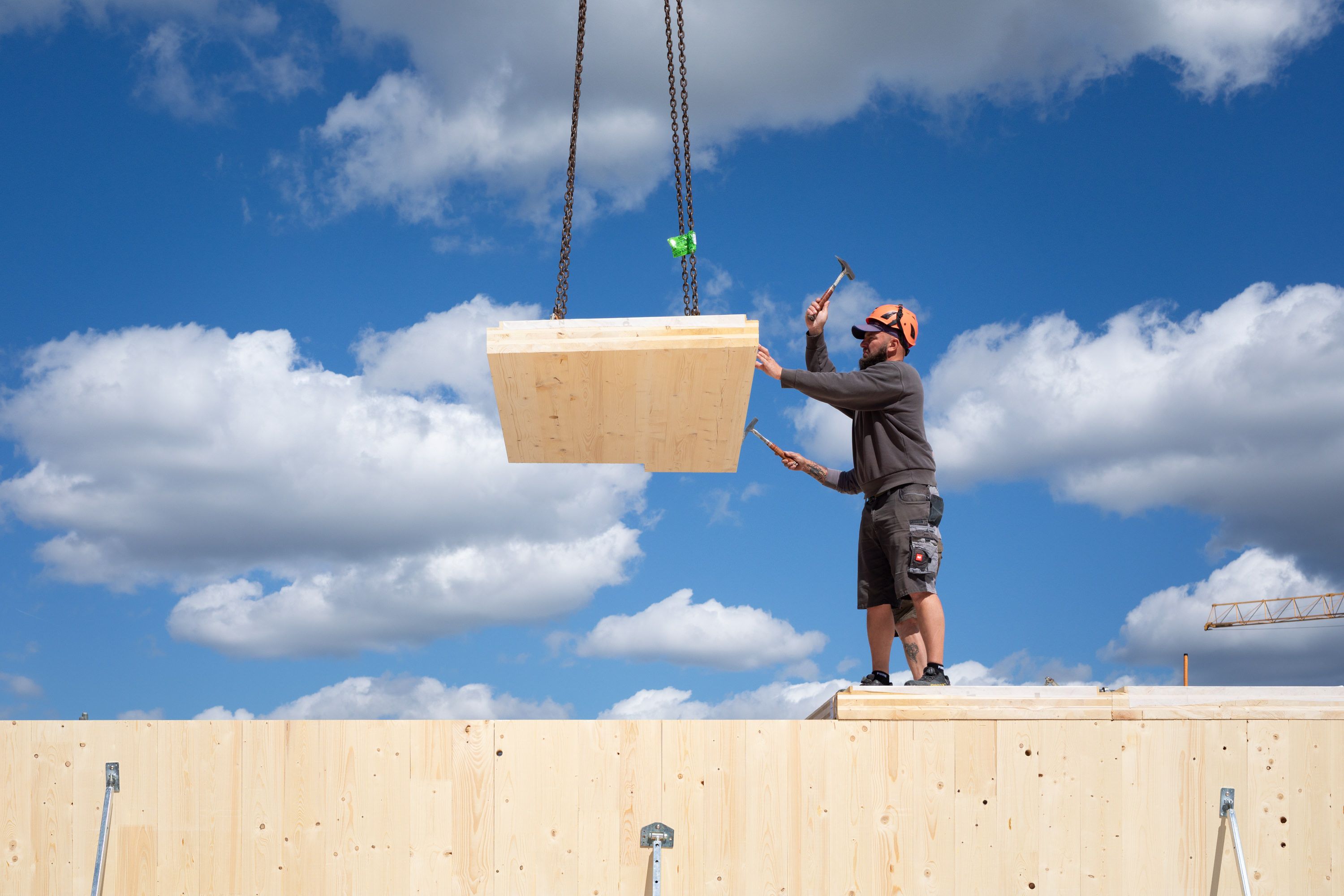Timber Constrution

Courage, respect and foresight. And a lot of thought.
We have a very special connection to wood. Because it is our craft at its origins - and has always been our passion. And for us it is one of the most important keys to a transformation of the construction industry that is better for the climate. Our goal is to use the entire spectrum of economic and ecological advantages of this renewable building material for our architecture. To this end, we continuously consult the latest research results and perspectives on the topic, exchange ideas with researchers at home and abroad, and conduct research ourselves in various projects on climate-friendly construction methods. The decisive question for us is the CO2 binding capacity of wood - after all, the most important renewable raw material in the construction industry in our latitudes. Because we want to understand whether and to what extent building with wood can contribute to a CO2 sink - and then take action ourselves. The fact that answering this question is still complex and will remain so for some time is what motivates us.

Does cutting down trees save CO2?
In jedem Falle orientieren wir uns in unserer Bewertung der Dinge an den Empfehlungen und Forschungsergebnissen international anerkannter Institutionen und Institute. Der überwiegende Teil aller wissenschaftlichen Erhebungen kommt zum Ergebnis, dass es einen positiven Beitrag zum Klimaschutz leistet, wenn wir Holz aus nachhaltig bewirtschafteten Wäldern als Baumaterial verwenden. Aktuell verbessern Waldbewirtschaftung und Holzverwendung die Treibhausgasbilanz Deutschlands laut den Autoren von „Klimaschutz mit Wald“ (BIUZ, 1/2021) um etwa 11 % bis 14 %. Wir sind überzeugt: Das geht noch besser – und wir als Architektinnen und Architekten können und wollen einen Beitrag leisten. Doch gehen wir nochmals einen Schritt zurück: Vielleicht erscheint es auf den ersten Blick nicht sinnvoll, Bäume zu fällen, um das Holz als Baumaterial zu verwenden – würden die Bäume im Wald doch weiter Photosynthese betreiben und damit CO2 abbauen. Doch Forschungen legen nahe, dass man den Baum nicht einzeln betrachten darf, sondern als Teil des Systems ‚Wald‘.1.827 / 5.000In any case, we base our assessment on the recommendations and research results of internationally recognized institutions and institutes. The majority of all scientific surveys come to the conclusion that using wood from sustainably managed forests as a building material makes a positive contribution to climate protection. According to the authors of "Climate Protection with Forests" (BIUZ, 1/2021), forest management and wood use are currently improving Germany's greenhouse gas balance by around 11% to 14%. We are convinced that things can be done even better - and we as architects can and want to make a contribution. But let's go back a step: At first glance, it may not seem sensible to cut down trees to use the wood as a building material - after all, the trees in the forest would continue to carry out photosynthesis and thus reduce CO2. But research suggests that the tree should not be viewed in isolation, but as part of the 'forest' system. Regularly removing wood and replanting young trees reduces competitive pressure in the forest: the remaining stands have a better supply of nutrients and water and can therefore carry out more photosynthesis. This compensates for the lack of CO2 binding capacity of the felled trees. In addition, sustainably managed forests - i.e. forests from which wood is regularly removed for commercial purposes - demonstrably emit less CO2 than their unmanaged counterparts. This is because in managed forests, no CO2 is released through the decomposition of dead wood. And what's more: in managed forests, wood growth is higher than in unmanaged forests by controlling the stand density.


The more durable, the more climate-friendly
We must not forget that the amount of raw wood will remain high in the next 10-15 years, because climate change and the associated lack of rainfall and increased pest infestation will continue to cause a large number of trees to die. This wood should be used as far as possible in the interests of climate protection. Not only from the perspective of many studies, but also from our own personal perspective, it makes the most sense to use the extracted wood for long-lasting products - and thus to bind the CO2 stored in it in the long term. We do this by using wood as a building material. Preferably in such a way that the CO2 is trapped in the building for at least decades. If we use a tree, for example, as a support that replaces a component made of concrete and steel, this saves considerable amounts of CO2 that would have been released if the tree had been left to rot in the forest at some point and a CO2-intensive concrete support had been chosen instead.
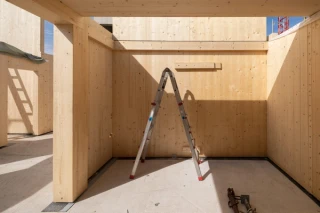
do we have enough wood?
In our view, there is little reason to worry about whether the existing wood is sufficient for all the construction projects. As extensive as the potential of wood as a building material is, it is also limited: It will never be a question of completely replacing steel and concrete with wood in construction projects on a global scale. Because components in contact with the ground and infrastructure projects (tunnels, bridges, dams, etc.) will continue to be built from mineral building materials in the future. Even projects that rely extensively on wood as a building material are hybrid buildings with a varying proportion of mineral or metallic building materials - depending on the type of construction, typology and building class.


Our responsibility for the construction industry
The question that primarily concerns us is that of our own possibilities: What can we as architects contribute to make the best possible use of the wood available? We ask ourselves this question in every construction project and also in our research projects. We are eager to develop new methods, for example how hardwood can be used more as a building material. And we can do this multiple times, in cycles and at a high level for as long as possible. This is also why we are researching together with partners which constructions make it possible for wood used as a building material to be dismantled without causing any damage in the event of conversion or demolition. Because every time wood is reused as a building material, there is a significant substitution effect. The resource efficiency and CO2 storage effects are multiplied each time. Our goal: to push back as far as possible the point at which thermal recycling or composting occurs in this cascade use of wood. In this way, we want to make our own personal contribution to a construction industry that is less harmful to the climate.
